12 Ways to Eat Well on a Budget
PAGE 2
1. Fish and Seafood: There's nothing fishy about frozen.
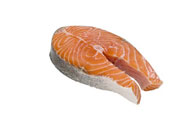 Save: Many of us are trying to eat more seafood, but the prices can be prohibitive. Frozen fish is a smart way to save. Much of the "fresh" seafood at grocery stores has been previously frozen anyway (it will say so on the label). Other budget-friendly choices include canned sardines and farmed tilapia and catfish, either fresh or frozen.
Save: Many of us are trying to eat more seafood, but the prices can be prohibitive. Frozen fish is a smart way to save. Much of the "fresh" seafood at grocery stores has been previously frozen anyway (it will say so on the label). Other budget-friendly choices include canned sardines and farmed tilapia and catfish, either fresh or frozen.
Splurge: Wild Alaskan salmon is a good investment; it contains more omega-3s than farmed, and it's the only salmon truly certified as wild (a 2005 investigation found that the majority of salmon labeled "wild" actually isn't). Plus, Alaskan is the only sustainable salmon pick on the Monterey Bay Aquarium's Seafood Watch list. As for scallops, look for those labeled "dry." These aren't actually dry—they just haven't been soaked in sodium tripolyphosphate, a preservative commonly used to make (cheaper) scallops absorb excess water, says Henry Lovejoy, the founder of EcoFish. Who wants to pay $9 a pound for water?
2. Baking ingredients: Real vanilla does cookies proud.
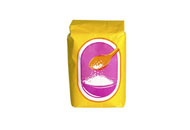 Save: Store-brand sugar is indistinguishable from gourmet version, says Susan Reid, editor of King Arthur Flour's The Baking Sheet. Store-brand butter will perform just as well in baking as a high-end European style (use the latter to spread on bread and other baked goods). And while Reid says top-quality dark chocolate will make for richer-tasting baked goods, you don't need a premium brand white chocolate. Just make sure it's real white chocolate, with cocoa butter listed as a primary ingredient.
Save: Store-brand sugar is indistinguishable from gourmet version, says Susan Reid, editor of King Arthur Flour's The Baking Sheet. Store-brand butter will perform just as well in baking as a high-end European style (use the latter to spread on bread and other baked goods). And while Reid says top-quality dark chocolate will make for richer-tasting baked goods, you don't need a premium brand white chocolate. Just make sure it's real white chocolate, with cocoa butter listed as a primary ingredient.
Splurge: Almost every expert cited real vanilla extract as one thing they don't ever scrimp on. "Never use the artificial stuff!" says Reid. "It has one component—a chemical called vanillin. That's one flavor note, trying to make up for 132 flavor notes found in true vanilla. I can instantly tell when a baked good uses fake. It's worth paying $10 for the real stuff." The right variety of flour (pastry, bread, all-purpose) is also worth the investment because it will have a specific protein percentage that allows your bread to rise properly or your cake to feel smooth. Look for "unbleached" and "unbromated" versions. Finally, if you don't bake often, buy smaller amounts and store in a cool, dry environment—flours, especially whole grain, can go rancid after three to six months.
3. Cooking Ware: A good pan is essential.
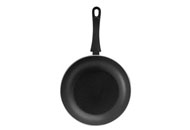 Save: "I love the basic $7 cookie sheets from places like Costco and Sam's Club," says Reid, who adds that there's no need for things like "cushion technology." Pasta pots and stockpots are also a good place to economize: Boiling water and simmering stock do not require anything fancy. And forget about that top-of-the-line 10-piece department store knife set; investing in two good-quality, midprice knives—a simple, sharp chef's and paring knife—should do it. The most important thing to remember when choosing a knife is that it feels comfortable and sturdy in your hand—brand names or chic styling are secondary considerations.
Save: "I love the basic $7 cookie sheets from places like Costco and Sam's Club," says Reid, who adds that there's no need for things like "cushion technology." Pasta pots and stockpots are also a good place to economize: Boiling water and simmering stock do not require anything fancy. And forget about that top-of-the-line 10-piece department store knife set; investing in two good-quality, midprice knives—a simple, sharp chef's and paring knife—should do it. The most important thing to remember when choosing a knife is that it feels comfortable and sturdy in your hand—brand names or chic styling are secondary considerations.
Splurge: All our experts agree—save up your pennies for one high-quality piece of skillet-type cookware that you'll use for preparations where an even transfer of heat matters, like searing meat or sautéeing vegetables. Reid claims that if she were stranded on a desert island, she'd want her All-Clad 2-quart stainless steel sautéuse pan. "It's shallow enough to fry in, but the straight sides and lid mean you can use it for stews or to braise meats and vegetables," she says. And even though it costs well over $100, "it'll last 100 years."
4. Liquor: Straight-up saving...with a twist.
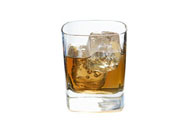 Save: Most Americans drink vodka in cocktails, not straight up, says Noah Rothbaum, editor in chief of Liquor.com. "It's a neutral spirit by definition, so if it's mixed with something like cranberry juice, a standard, under-$20 bottle will be fine." The same goes for gin: Rothbaum says that some of the best gins in the world—and the ones mixologists use—come in under $20.
Save: Most Americans drink vodka in cocktails, not straight up, says Noah Rothbaum, editor in chief of Liquor.com. "It's a neutral spirit by definition, so if it's mixed with something like cranberry juice, a standard, under-$20 bottle will be fine." The same goes for gin: Rothbaum says that some of the best gins in the world—and the ones mixologists use—come in under $20.
Splurge: "Tequila is one place where you do have to spend some money, even when mixed—it's hard to find a good bottle below $30 (although there are lots of bad bottles)," says Rothbaum. Invest in a bottle of good liqueur, like $30 Canton or St. Germain; a few drops can make any mixed drink or wine taste much more expensive. And take a tip from good bars across the country: For the best-tasting cocktail, always use freshly squeezed juices and make your own simple syrup.
5. Feel good about cheap wine.
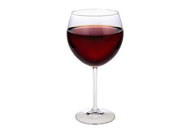 Save: Cheap ($7 and under), widely available bottles from Barefoot, Trader Joe's Charles Shaw, and Black Box were all ranked highly when their labels were concealed. "In a wine store, the best place to start is with the wines you haven't heard of—not because wines from obscure regions or producers are necessarily better, but because you're not paying a premium for a brand name or producer," says Wine Trials author Alexis Herschkowitsch. Or look for wines from a so-called negociant, like Cameron Hughes Wine, who buys the excess from high-end wineries and sells it for much less under its own label. A store can direct you to those they carry.
Save: Cheap ($7 and under), widely available bottles from Barefoot, Trader Joe's Charles Shaw, and Black Box were all ranked highly when their labels were concealed. "In a wine store, the best place to start is with the wines you haven't heard of—not because wines from obscure regions or producers are necessarily better, but because you're not paying a premium for a brand name or producer," says Wine Trials author Alexis Herschkowitsch. Or look for wines from a so-called negociant, like Cameron Hughes Wine, who buys the excess from high-end wineries and sells it for much less under its own label. A store can direct you to those they carry.
Splurge: If you have an emotional connection to a wine—its vintage is the year you graduated from college, or it's from an area you vacationed in—that warrants spending more. When serving a vino that's more expensive, keep the bottle on the table and (subtly) let your fellow tasters know its value: Studies show people enjoy a wine more when they think it costs a lot.
6. Spices and Herbs: Turn over a new (dried) leaf.
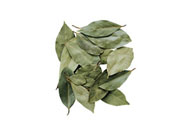 Save: "I choose the generic or bulk version of almost every spice or dried herb," says Felder (they can cost as little as one-quarter as much as a name brand). Alejandra Ramos, of the award-winning food site AlwaysOrderDessert.com, adds that you don't always have to use fresh herbs in a recipe, even when called for. Especially in cooked dishes, dried work fine (some herbs, like oregano, are even better dried).
Save: "I choose the generic or bulk version of almost every spice or dried herb," says Felder (they can cost as little as one-quarter as much as a name brand). Alejandra Ramos, of the award-winning food site AlwaysOrderDessert.com, adds that you don't always have to use fresh herbs in a recipe, even when called for. Especially in cooked dishes, dried work fine (some herbs, like oregano, are even better dried).
Splurge: Always buy fresh basil and parsley—the dried versions lack the evocative aromatic compounds that give these herbs their unique flavors. And grind your pepper fresh, either with the built-in device that comes on many pepper jars or with your own grinder.
 Save: Many of us are trying to eat more seafood, but the prices can be prohibitive. Frozen fish is a smart way to save. Much of the "fresh" seafood at grocery stores has been previously frozen anyway (it will say so on the label). Other budget-friendly choices include canned sardines and farmed tilapia and catfish, either fresh or frozen.
Save: Many of us are trying to eat more seafood, but the prices can be prohibitive. Frozen fish is a smart way to save. Much of the "fresh" seafood at grocery stores has been previously frozen anyway (it will say so on the label). Other budget-friendly choices include canned sardines and farmed tilapia and catfish, either fresh or frozen.Splurge: Wild Alaskan salmon is a good investment; it contains more omega-3s than farmed, and it's the only salmon truly certified as wild (a 2005 investigation found that the majority of salmon labeled "wild" actually isn't). Plus, Alaskan is the only sustainable salmon pick on the Monterey Bay Aquarium's Seafood Watch list. As for scallops, look for those labeled "dry." These aren't actually dry—they just haven't been soaked in sodium tripolyphosphate, a preservative commonly used to make (cheaper) scallops absorb excess water, says Henry Lovejoy, the founder of EcoFish. Who wants to pay $9 a pound for water?
2. Baking ingredients: Real vanilla does cookies proud.
 Save: Store-brand sugar is indistinguishable from gourmet version, says Susan Reid, editor of King Arthur Flour's The Baking Sheet. Store-brand butter will perform just as well in baking as a high-end European style (use the latter to spread on bread and other baked goods). And while Reid says top-quality dark chocolate will make for richer-tasting baked goods, you don't need a premium brand white chocolate. Just make sure it's real white chocolate, with cocoa butter listed as a primary ingredient.
Save: Store-brand sugar is indistinguishable from gourmet version, says Susan Reid, editor of King Arthur Flour's The Baking Sheet. Store-brand butter will perform just as well in baking as a high-end European style (use the latter to spread on bread and other baked goods). And while Reid says top-quality dark chocolate will make for richer-tasting baked goods, you don't need a premium brand white chocolate. Just make sure it's real white chocolate, with cocoa butter listed as a primary ingredient.Splurge: Almost every expert cited real vanilla extract as one thing they don't ever scrimp on. "Never use the artificial stuff!" says Reid. "It has one component—a chemical called vanillin. That's one flavor note, trying to make up for 132 flavor notes found in true vanilla. I can instantly tell when a baked good uses fake. It's worth paying $10 for the real stuff." The right variety of flour (pastry, bread, all-purpose) is also worth the investment because it will have a specific protein percentage that allows your bread to rise properly or your cake to feel smooth. Look for "unbleached" and "unbromated" versions. Finally, if you don't bake often, buy smaller amounts and store in a cool, dry environment—flours, especially whole grain, can go rancid after three to six months.
3. Cooking Ware: A good pan is essential.
 Save: "I love the basic $7 cookie sheets from places like Costco and Sam's Club," says Reid, who adds that there's no need for things like "cushion technology." Pasta pots and stockpots are also a good place to economize: Boiling water and simmering stock do not require anything fancy. And forget about that top-of-the-line 10-piece department store knife set; investing in two good-quality, midprice knives—a simple, sharp chef's and paring knife—should do it. The most important thing to remember when choosing a knife is that it feels comfortable and sturdy in your hand—brand names or chic styling are secondary considerations.
Save: "I love the basic $7 cookie sheets from places like Costco and Sam's Club," says Reid, who adds that there's no need for things like "cushion technology." Pasta pots and stockpots are also a good place to economize: Boiling water and simmering stock do not require anything fancy. And forget about that top-of-the-line 10-piece department store knife set; investing in two good-quality, midprice knives—a simple, sharp chef's and paring knife—should do it. The most important thing to remember when choosing a knife is that it feels comfortable and sturdy in your hand—brand names or chic styling are secondary considerations.Splurge: All our experts agree—save up your pennies for one high-quality piece of skillet-type cookware that you'll use for preparations where an even transfer of heat matters, like searing meat or sautéeing vegetables. Reid claims that if she were stranded on a desert island, she'd want her All-Clad 2-quart stainless steel sautéuse pan. "It's shallow enough to fry in, but the straight sides and lid mean you can use it for stews or to braise meats and vegetables," she says. And even though it costs well over $100, "it'll last 100 years."
4. Liquor: Straight-up saving...with a twist.
 Save: Most Americans drink vodka in cocktails, not straight up, says Noah Rothbaum, editor in chief of Liquor.com. "It's a neutral spirit by definition, so if it's mixed with something like cranberry juice, a standard, under-$20 bottle will be fine." The same goes for gin: Rothbaum says that some of the best gins in the world—and the ones mixologists use—come in under $20.
Save: Most Americans drink vodka in cocktails, not straight up, says Noah Rothbaum, editor in chief of Liquor.com. "It's a neutral spirit by definition, so if it's mixed with something like cranberry juice, a standard, under-$20 bottle will be fine." The same goes for gin: Rothbaum says that some of the best gins in the world—and the ones mixologists use—come in under $20. Splurge: "Tequila is one place where you do have to spend some money, even when mixed—it's hard to find a good bottle below $30 (although there are lots of bad bottles)," says Rothbaum. Invest in a bottle of good liqueur, like $30 Canton or St. Germain; a few drops can make any mixed drink or wine taste much more expensive. And take a tip from good bars across the country: For the best-tasting cocktail, always use freshly squeezed juices and make your own simple syrup.
5. Feel good about cheap wine.
 Save: Cheap ($7 and under), widely available bottles from Barefoot, Trader Joe's Charles Shaw, and Black Box were all ranked highly when their labels were concealed. "In a wine store, the best place to start is with the wines you haven't heard of—not because wines from obscure regions or producers are necessarily better, but because you're not paying a premium for a brand name or producer," says Wine Trials author Alexis Herschkowitsch. Or look for wines from a so-called negociant, like Cameron Hughes Wine, who buys the excess from high-end wineries and sells it for much less under its own label. A store can direct you to those they carry.
Save: Cheap ($7 and under), widely available bottles from Barefoot, Trader Joe's Charles Shaw, and Black Box were all ranked highly when their labels were concealed. "In a wine store, the best place to start is with the wines you haven't heard of—not because wines from obscure regions or producers are necessarily better, but because you're not paying a premium for a brand name or producer," says Wine Trials author Alexis Herschkowitsch. Or look for wines from a so-called negociant, like Cameron Hughes Wine, who buys the excess from high-end wineries and sells it for much less under its own label. A store can direct you to those they carry.Splurge: If you have an emotional connection to a wine—its vintage is the year you graduated from college, or it's from an area you vacationed in—that warrants spending more. When serving a vino that's more expensive, keep the bottle on the table and (subtly) let your fellow tasters know its value: Studies show people enjoy a wine more when they think it costs a lot.
6. Spices and Herbs: Turn over a new (dried) leaf.
 Save: "I choose the generic or bulk version of almost every spice or dried herb," says Felder (they can cost as little as one-quarter as much as a name brand). Alejandra Ramos, of the award-winning food site AlwaysOrderDessert.com, adds that you don't always have to use fresh herbs in a recipe, even when called for. Especially in cooked dishes, dried work fine (some herbs, like oregano, are even better dried).
Save: "I choose the generic or bulk version of almost every spice or dried herb," says Felder (they can cost as little as one-quarter as much as a name brand). Alejandra Ramos, of the award-winning food site AlwaysOrderDessert.com, adds that you don't always have to use fresh herbs in a recipe, even when called for. Especially in cooked dishes, dried work fine (some herbs, like oregano, are even better dried). Splurge: Always buy fresh basil and parsley—the dried versions lack the evocative aromatic compounds that give these herbs their unique flavors. And grind your pepper fresh, either with the built-in device that comes on many pepper jars or with your own grinder.



